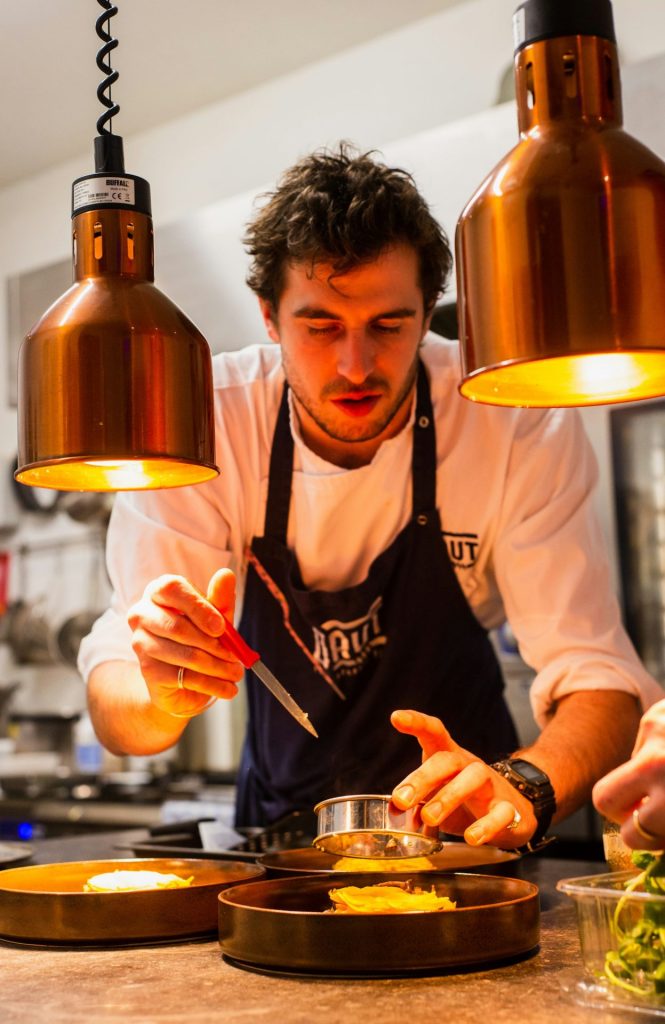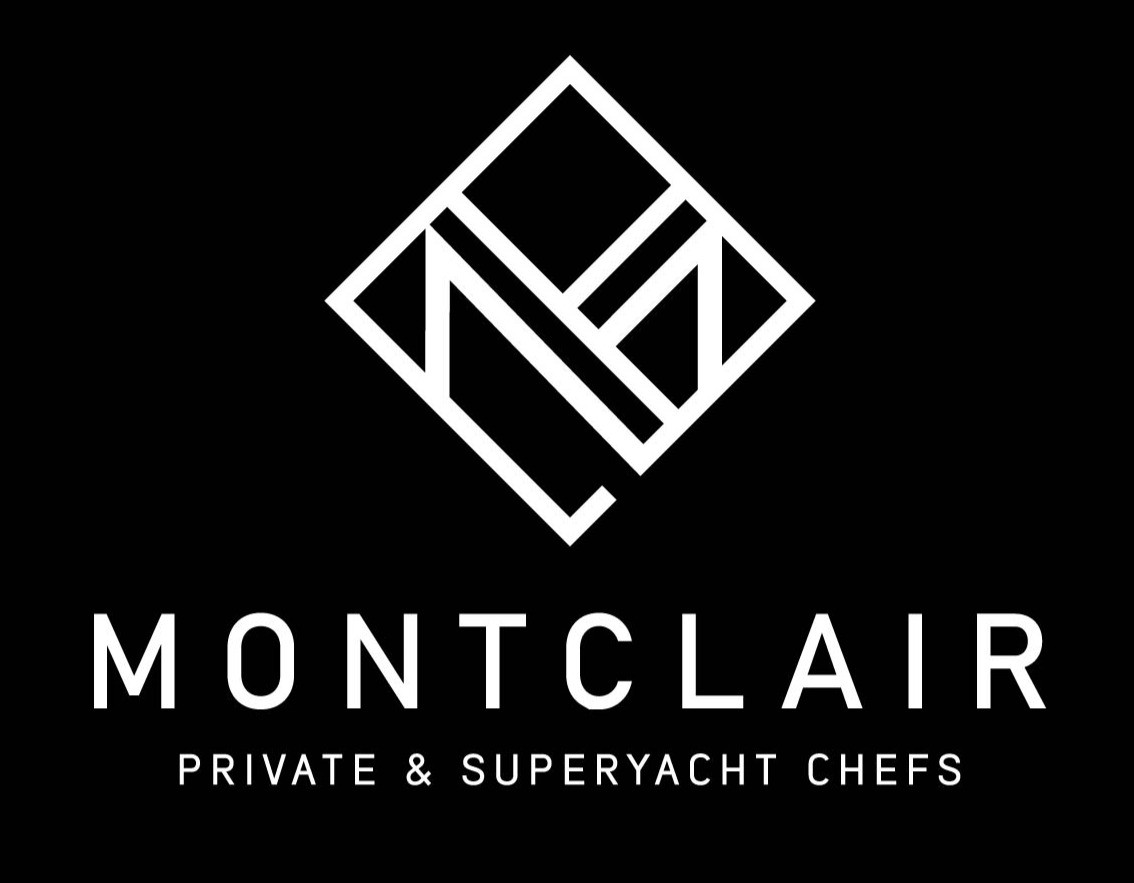Our monthly Galley Crumbs blog is back, courtesy of Montclair Chef, the largest network of Superyacht chefs in the industry. Experienced Superyacht chef Chris Demaillet is here with how to make your chef CV the best it can be.
Welcome back, chefs. Today, I wanted to delve into the simple steps of preparing yourself to get a job on a yacht. No, it certainly isn’t rocket science, and yes, anyone can attempt to get a job. There are lots of agencies, and it’s pretty straightforward to apply. However, presenting yourself involves more than just sending your CV to an email address. It’s about what goes into your documents and how you present yourself. I thought it was important to remind you that the first impression is everything in recruitment and when assessing someone for an open position.
Captains and recruitment companies receive a lot of CVs for the jobs they have vacant. Trust me, this is what I do daily. Even though you think you are “perfect for the job” (as previously mentioned by chefs applying for live roles), you are only one of many applicants, it isn’t rare to receive over 200 chef’s Cvs for a new interesting job.

Standing Out
In a room full of people with only you as a chef, you will certainly stand out as the best cook. But if you change rooms and go into one filled with experienced chefs, where do you place? Chances are, you may not be in the top 10, or perhaps you are? This all depends on the role, the requirements, and who is hiring for the position (not talking about which chef agency here, but what individual is recruiting for the position, where they are from, their previous experience with chefs, and how trained they are in managing people).
These are all variables that you will never control, but there is a silver lining. You do control how you present yourself on your CV, how you present online, and how you introduce yourself in an email. Let’s break down the simple ways you can improve your presentation, and therefore your chances of getting an interview for that job you want.
Check Your Email
Email address: This may seem obvious, but don’t use an email that sounds like “highongrass at gmail.com” or anything that labels you inappropriately. This is going to be your point of contact, and it needs to be a serious and professional email address.
Email content: This is important. If you apply for a job by reaching out to an email address provided in a job ad… DO NOT ONLY SEND YOUR CV AND A BLANK EMAIL! Yes, I am using capital letters here because this is probably one of the laziest ways to apply for a job. If it looks lazy, you will appear to be lazy, and therefore, you have close to zero chances of being hired. So let’s spend some time crafting an email that matches the live job and present briefly and politely who you are.

Step By Step
This is a topic we could spend a long time on, but I’m just going to give you a quick checklist of things I would strongly advise you to check and update if you haven’t:
- Telephone: Please write your telephone number with the country prefix so people who want to call you can just click and call. Nobody has time to Google your country code.
- Photo: Yes, I understand that some professionals may advise you to not attach a photo to your CV, but when you apply for a job internationally, the recruiter (the captain or the owner of the yacht) would really like to get a better idea of who you are. When you choose that photo, please smile and choose one where you are alone, not a party photo, and not one where you look like you are going to attack somebody, the stereotype photo of the chef with arms crossed, looking slightly angry and holding a knife is NOT a good look, looking approachable, professional and smiling in your profile photo will make people want to approach you.
- Experience: I understand you have a lot to say about your duties in previous roles, but the recruiter does not care about most of what you wrote. They have to go through dozens of CVs and would rather see bullet points or a succinct summary of information about what you did and what your responsibilities were.
- Location: Please add the city AND the country to the place you have worked. It may seem obvious to you that “Slough” is in the UK, but if you come from the US, for example, you would have no idea. Therefore, you wouldn’t fully understand the experience and where you have worked. So, let’s write the city and the country after the name of the places where you worked. Also a good idea to highlight any award winning restaurants where you worked or were a stagiaire / intern at.
- Previous roles: It is clear that everyone is trying to buff up their CVs, but writing 4 times on your resume that you have been, I quote, “Executive Head Chef” when you have only worked on yachts of up to 24 meters is not a true statement. You were most likely a sole chef, there was no team to oversee, and no other chefs under you. Let’s just be honest.
- Portfolio: I would strongly suggest you create a food portfolio and add a link to it on your CV. This could be online under a second Instagram account. I have heard too many times from chefs that they “don’t do Instagram,” but here’s a little insight for you. If you want to be hired as a chef and flown into a new role halfway across the world, you will need some proof of what you can do and what you have done in the past. Yes, it can be difficult to take great professional photos of your dishes while you are working, but the quality isn’t as important as the content of the photos. Bad lighting doesn’t really matter. The idea here is to get a sense of your repertoire, your style of plating, and understand what you think represents your style as a chef and what photos will be the ambassador of your personal brand. Sometimes, it could be a good idea to spend a little time between seasons to prepare some of your favorite dishes and take a few photos in a clean environment and with decent natural light. It really makes a difference when you apply for a chef job.
- Instagram account: Please make it public. Adding the link to your portfolio or to your professional Instagram account but setting it up to private means that no one can see it. If you apply for a job, they want to see your food. If they can’t, you may not be contacted or selected.
These are a few simple steps to make you stand out from the crowd!
One Last Piece Of Advice
One last piece of advice would be to also look at your resume with an honest eye and be able to self-criticize the overall presentation. Not everyone is a Canva genius or a Word designer, so it could be a great idea, once you have updated the content of your CV, to get in touch with an online freelancer (for example on www.Fiverr.com ), and order a simple CV revamp gig to update your resume to the latest and modern look. Nowadays, a black and white CV with terrible formatting is as bad as a blurry photo; it really doesn’t help you.
I hope these essential points can help you update and modernize your CV and assist you in getting that job you have been looking for. As always, we at Montclair Chef are happy to assist if you want some brutally honest feedback on your own resume. I promise to be transparent and honest with you about how we perceive it. We are not specialized in CV reviews, but we do get to see a lot of great CVs and also some pretty poorly written ones.
Shoot us an email at info@montclairchef.com with the subject line “CV FEEDBACK” if you want to get a second opinion on your document.
Wishing you all the best of luck!
Montclair Chef specialises in Yacht Crew and Private Chef recruitment globally.
Connect with Chris Demaillet on LinkedIn here: https://www.linkedin.com/in/chrisdemaillet/
Montclair Chef website: https://www.montclairchef.com/

To keep up to date with the latest Superyacht Content News, click here.
Sign up to our Newsletter below:




.gif)


















